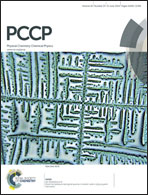Two and three dimensional network polymers for electrocatalysis
Abstract
Recently, two and three dimensional network polymers have started to gain traction in the research sphere as scientists look for ways to create materials with more tailored properties. These network polymers show high surface area and specific, sometimes periodic, functionality, providing perfect templates both to host electrocatalytic materials as well as function as electrocatalysts themselves. While doped carbon based materials such as graphene and carbon nanotubes, as well as diamond, have demonstrated their electrocatalytic potential, other network polymers have yet to be synthesized in a manner to optimize their potential. As these polymers are built of a periodic arrangement of appropriately functionalized monomers, an exact arrangement of functional sites should be possible, which combined with potentially high surface areas should lead to very high catalytic activity. This perspective will cover the synthesis and achievements of the mentioned doped carbon materials before taking a look at the strengths, shortcomings, and future goals in electrocatalysis as related to more novel network polymers.


 Please wait while we load your content...
Please wait while we load your content...